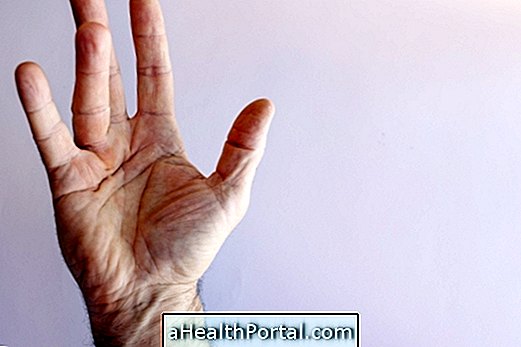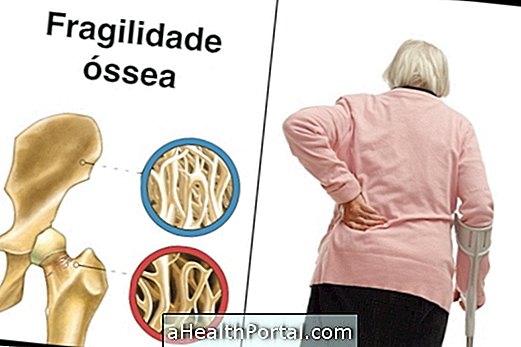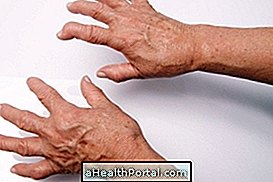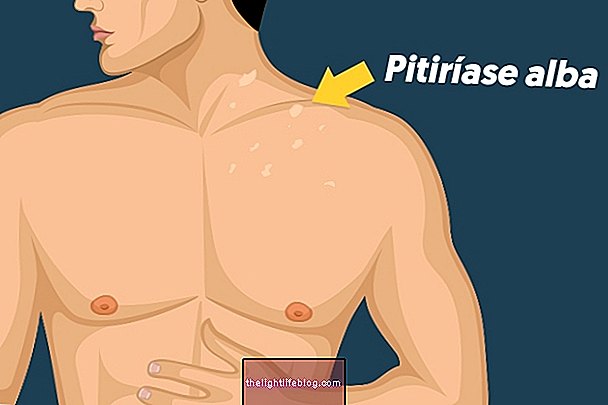Spondylarthrosis is a type of arthrosis that causes a series of changes in the lumbar, cervical or dorsal spine, affecting the bones, ligaments, intervertebral disc and nerves, which causes pain and is often disabling.
In spondyloarthrosis, the intervertebral disc may become deformed causing a disc herniation and, in addition, the spinal ligaments become loose, generating typical symptoms of the disease including pain worsening with movements.
Your treatment should be guided by the orthopedist who may indicate use of anti-inflammatories to take, inject into the joint or pass into the skin. In addition, physical therapy is very helpful being effective in relieving symptoms and improving the quality of life of the person.
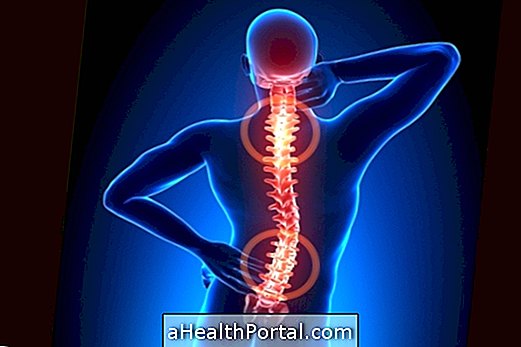
Symptoms of Spondyloarthrosis
The symptoms of spondyloarthrosis are related to where it is located, in the cervical, dorsal or lumbar. Some of these symptoms are:
- Back pain, which worsens with movements and tends to improve with rest;
- Back pain that radiates to the legs or arms if there is involvement of the peripheral nervous system;
- Decreased muscle strength;
- Lack of flexibility.
The diagnosis is made by performing examinations such as x-ray, magnetic resonance imaging or computed tomography.
Treatment for spondyloarthrosis
Treatment for spondyloarthrosis can be done with medications to relieve pain and discomfort, but physical therapy is essential. If the pain is disabling or does not regress with physiotherapy, surgery may be used.
Other treatments like acupuncture, relaxing massages and osteopathy are also excellent options to complement the treatment, but the most indicated is to adopt several treatments at the same time because they complement each other.
Physiotherapy
In physical therapy for spondylarthrosis, you can do exercises to improve posture, use devices to relieve pain and discomfort, and do stretches that will improve blood supply and improve range of motion.
To complement the treatment, one must lose weight, avoid lifting weights and make great efforts, so as not to further damage the spine. Therapeutic and relaxation massages may also be helpful, as well as taking analgesics and anti-inflammatories on days of increased pain.
The work of physiotherapy is able to alleviate the symptoms of spondyloarthrosis, but it is a progressive and degenerative disease and probably the individual should do several sessions of physical therapy during the life.
How to live with spondyloarthrosis
In order to live better with spondyloarthrosis, well-directed physical activity is the best way to accept and learn to live with spondyloarthrosis, which is an orthopedic disease that, although it has no cure, has treatment to control its symptoms.
It is important to find the best way to get around the pain and limitations that this disease causes and some useful tips are relaxation massages, muscle stretching exercises and walking, although sometimes surgery may be indicated to decrease discomfort and slow your rate of disease progression.
Spondyloarthrosis can be controlled and it is possible to go days without pain, but for this it is necessary to follow the directions of the doctor and the physiotherapist. Do not make efforts, lose weight and avoid poor posture are guidelines that should be followed daily.
Exercises such as Pilates on the ground or in the pool, help decrease pain and improve range of motion. But it is important that these exercises be performed under the guidance of a specialized physical therapist to avoid further damage to the spine. Hydrotherapy is also a great ally as it associates stretching with breathing movements, and warm water facilitates movement and promotes muscle relaxation.
